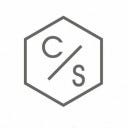Achieve an Effective Tracking Solution for Your Kubernetes Application
Today’s modern distributed computing and configuration systems, like Kubernetes, have resolved many complicated issues, such as multi-cloud workload management, governance, etc. Along with solutions, it has also brought new challenges.
Kubernetes cluster contains a set of multiple independent nodes and connected services in just a unit computer system.
Kubernetes is designed with microservices where each cluster uses small or light services to run significant operations on a platform. All its microservices are interconnected along with external services to store and provide data on users’ demands. These microservices benefit over a clustered architecture, like it contains simplified methods to develop, integrate, test, deploy, and manage applications, which can be scaled as per services’ instances without even impacting any other infrastructural element.
This article contains information about the most popular and reliable application tracking solutions and how they operate in the Kubernetes environment.
Jaeger:
Jaeger is an open-source distributed monitoring tool developed by Uber to run in the application with minimal performance loss. It uses support libraries and other external libraries to modify source code that runs efficiently on targeted platforms. In order to monitor applications using Jaeger, it is necessary to ensure that they are based on OpenTracing API and implemented to run in the production environment.
Jaeger owns an entire section, which dedicatedly audits Kubernetes deployments. Jaeger demands a specific Kubernetes operator, which must be integrated into the product before release. It also presents three best deployment strategies, such as:
- AllInOne: Aims for product testing and deploys all services into a single memory storage Pod.
- Production: Allows efficient tracing application with maintained storage. It does support Elasticsearch and Cassandra.
- Streaming: It is an enhanced production strategy that uses Kafka service to ingest data appropriately. It also improves data querying and visualization services.
ZipKin:
ZipKin contains the same feature and functionality as Jaeger but has a simpler and non-distributed architecture that simplifies deployment approaches.
In comparison with Jaeger, Zipkin is older and supports more programming languages and platforms through official libraries. Zipkin’s libraries own their individual strategies and orchestration properties for defining data samples. Plus, Zipkin stores each data that its libraries gather.
In Zipkin, there are no external agents to configure everything, but instead of that, it demands orchestration inside of each application’s client library. Thus, employees have to work excessively since its libraries contain varying configuration properties. Kubernetes ConfigMap helps employees lower their configuration workloads.
AWS X-Ray:
AWS X-Ray is designed to get an uninterrupted distributed tracing of applications or services deployed on the AWS Cloud Platforms. It is specifically designed to support AWS cloud services. It provides some libraries through which developers can access external and self-hosted services, including MySQL and PostgreSQL. AWS X-Ray tool provides support-library codes for programming languages, like Java, .Net, Node JS, Go, and Python.
The X-Ray also uses external agents to connect and ingest tracing data in the backend of its platform. This method eliminates extra configuration work for employees inside the application in real-time and transfers the information into another service. There are chances for it to face difficulties in achieving application tracing if the deployment platform is not managed.
Using the AWS X-RAY tool with Kubernetes is more manageable than any other platform because it eliminates the need for deploying backend services or other storage solutions. It also supports an external agent named Kubernetes DaemonSet, which is almost the same as Jaeger.
Conclusion:
A combination of distributed tracing and Kubernetes services is the most prominent one available in today’s market. Businesses should use that combination with a toolset trusted by cloud service providers to enable developers to quickly identify errors while providing required information to decrease the system’s response time in minutes.
Facing cloud application efficiency and platform responsiveness issues? Contact CloudStakes Technology Pvt. Ltd. — the leading cloud computing service provider in India, to get the best cloud solutions and services, which can enhance your organizations’ productivity.
